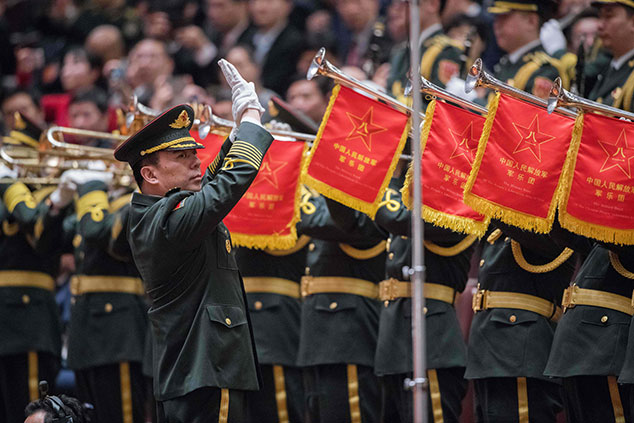
Downbeat manufacturing surveys have also injected some “healthy scepticism” into the China rally, says Laurence Fletcher in the Financial Times. The country’s CSI 300 benchmark of domestic stocks had rocketed 30% this year, but with factory output gauges virtually flat in April investors are re-examining their assumptions about how much the stimulus can do for China and other emerging markets. And that was before this week’s trade threat by US president Donald Trump (see below) provided a nasty shock. The CSI 300 fell by almost 6% on 6 May, its worst day in more than three years. The yuan also suffered its worst daily decline since 2016.
Retail investors return
The China bull has been driven higher by a “dramatic” improvement in investors’ moods, says Mike Bird in The Wall Street Journal. As much as 80% of the Chinese stockmarket is thought to be made up of retail investors, making it very susceptible to swings in sentiment. The rally has seen lending to buy stocks on margin in Shanghai rise by roughly a third since the beginning of February to some 600 billion yuan (£67.7bn). Yet such loans now look elevated by historical levels, limiting further potential upside for equities in the Middle Kingdom.
More stimulus arrives
China’s battle against “ill-conceived debt” remains a “delicate balancing act” between deleveraging the banking system and supporting growth, says Pete Sweeney on Breakingviews. It doesn’t seem to take much to tilt the balance back towards easing. Just hours after Trump’s latest trade tweets the central bank “effectively made about another $40bn available for small mainland firms to borrow”. Previous rounds of Chinese stimulus have focused on “state-directed lending splurges”, says Nathaniel Taplin in The Wall Street Journal. Yet this time policymakers are directing effort towards tax cuts and supporting private-sector businesses, which are particularly exposed to exports.
Headwinds for China, notably further trade hostilities, imply a choppier outlook for other emerging markets too given their exposure to global growth. The South African, Mexican and Turkish currencies all followed the yuan downwards this week. The MSCI Emerging Markets Index had jumped by more than 10% this year, but new doubts about US-China relations have “thrown a monkey-wrench” into the notion that a “stable yuan would anchor developing nation assets as a whole”, SocGen analyst Jason Daw told Bloomberg. Expect a bumpy ride over the coming weeks.
How much damage could a trade war do?
Only a month ago Donald Trump was boasting that an “epic deal” with China was in the works, says The Economist. Yet a pair of tweets has brought the world’s two biggest economies “back to the brink of a fully fledged trade war”. The US president threatened to impose 25% tariffs on all Chinese imports (at present only about $50bn-worth of tech imports pay the 25% rate). The tweets badly rattled markets.
The US has already imposed tariffs on $250bn of Chinese goods, with Beijing retaliating with levies on $110bn of US products. Chinese exports to the US have fallen 47% since June last year, according to Reuters. Estimates of the economic damage from existing measures are relatively modest, but a full-blown escalation could be expensive.
The International Monetary Fund has calculated that such a scenario would reduce US GDP by up to 0.6% and Chinese GDP by as much as 1.5%. The losses could rise to as much as 2% for both sides if the European car industry is also sucked into a prolonged trade war, according to a note from Deutsche Bank, putting the continent’s tentative recovery at risk.
The outlook for trade was not that rosy to begin with, says Simon MacAdam for Capital Economics. Global trade volumes fell by 1.8% month-on-month in February, the fourth decline in six months. Forward-looking indicators also suggest slowing momentum.
The global rally has been fuelled by optimism about a trade deal, so there is a great deal at stake for stocks. Most analysts think that Trump’s latest gambit is an attempt to wring concessions out of Beijing, Charlie McElligott of Nomura Holdings tells Bloomberg. It remains to be seen whether this is an “epic incidence of poker playing” or “a raging miscalculation”.